The first leaves have already begun to turn here in Ohio, so today we’re tackling 8 easy ways to extend the growing season and maximize your garden harvests!

I don’t know about where you are, but this past week has been killer hot and humid in the Midwest. I’m talking heat indices in the 100s°F (37-40°C) and thunderstorms everyday. The last thing I’ve wanted to do is my daily garden harvest.
Luckily, we’ve hit the point in summer where the garden is slowing down and maintenance levels are low. Well…part of that is me just giving up on the tomato jungle and the war with pests. But really, when it’s this hot, growth does slow down, and my summer plants are producing lower yields than when they peaked a few weeks ago.
But while I’m wilting in the August heat and glad the garden is low maintenance at the moment…I’ll miss it when it’s gone.
In fact, I’m trying to delay that moment as long as possible. I’ve already begun planting my fall garden full of frost-hardy veg that should last another few months.
But I’m also employing a variety of tactics to extend the growing season.
More on those below! For now, let’s tackle some FAQ about late season gardening.

What do I do with my garden when the season is over?
To a certain extent, that’s up to you!
If you want a break, just clear your beds of the spent plants and top up with a layer of compost to replenish and protect the soil.
If you, like me, want to extend the growing season, you can employ any of the strategies below to help things grow beyond your first frost. You’ll still want to pull spent plants. I suggest cutting at the soil line and allowing the roots to decompose and feed the soil, rather than digging them out. Then amend with compost and/or slow release fertilizer. This is also a great time to add any amendments your soil might need, like bone meal or vermiculite.
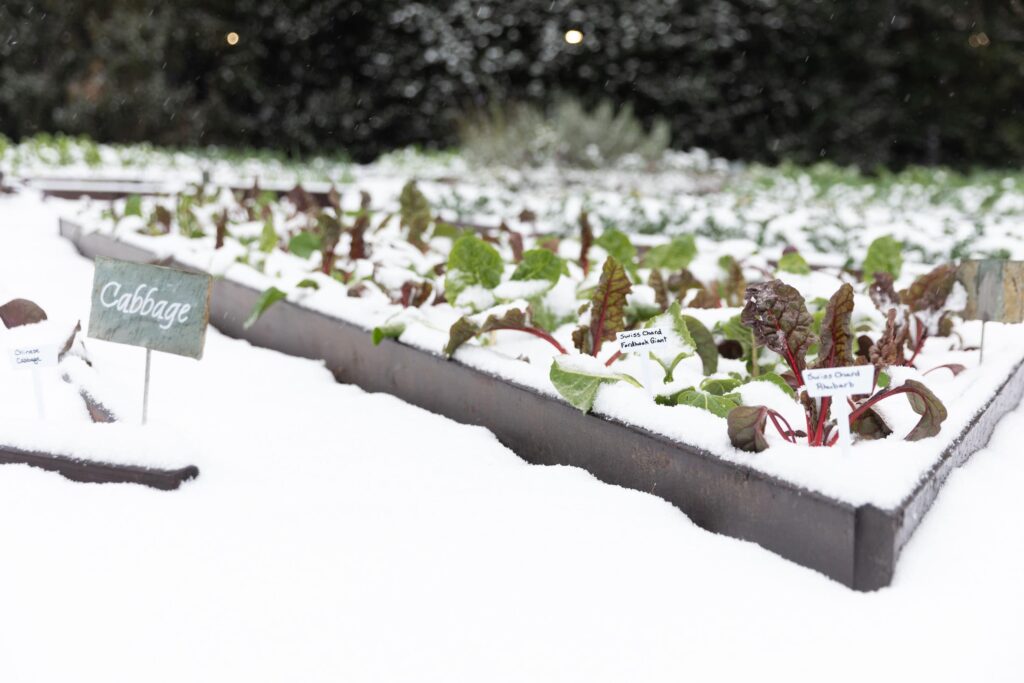
What is season extension/How do I extend my vegetable garden?
It’s simply extending the growing season on one or both sides of your first frost date to maximizing your growing potential.
Ever started seeds indoors under a grow light? That’s season extension. As is putting up row cover in the early spring to warm soil faster so you can plant sooner.
But today we’re focused on the other end of the season: extending growing beyond the first frost and into the fall and winter (depending on your climate).
There are loads of ways to extend the garden season, and we’re going to get into the weeds on 8 of them. But it’s really as simple as giving your plants some extra protection from the elements.
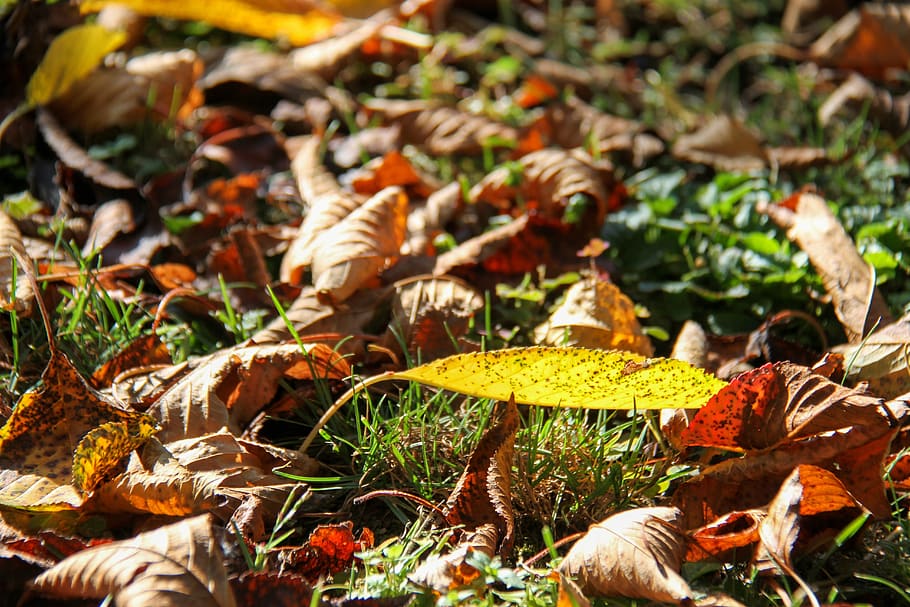
Why might I want to extend my growing season?
To grow more food! My garden is also my place of peace, so any chance to extend the growing season is good for my personal well-being.
But it is worth considering whether the specific benefits of season extension appeal to you. If you’re really only interested in growing tomatoes, peppers, or other hot season plants, season extension can only go so far.
If, on the other hand, you go crazy for greens, root veggies, and brassicas like kale, spring and fall growing is right up your alley. Often, these cool-loving veggies struggle in the heat of summer. But with just a little extra protection, you can have a bounty of them in the spring and fall.
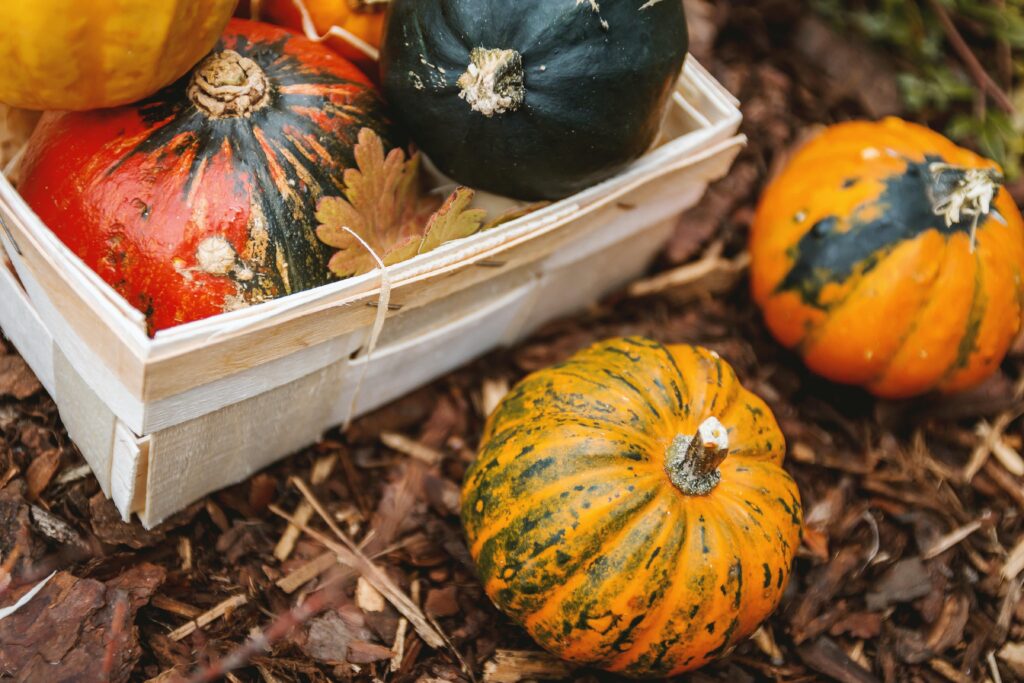
Are there any drawbacks to using season extenders?
There can be a few depending on your perspective. While gardening is a passion and pleasure, it’s also work. Come late summer, you may crave the rest that fall and winter promises. If you’re not interested in digging amongst snow to lift your row cover and harvest greens, it may not be for you. And that’s okay! We all have different cold tolerances.
The bigger issue, though, is soil depletion. Depending on your climate, you may be able to grow mostly year-round with the help of the season extension methods below. That can do a number on your soil health if you’re growing lots of heavy feeders. It’s smart to give your garden some break and to focus on building healthy, rich soil through regular amending.
8 Easy Ways to Extend Your Garden Harvest Season
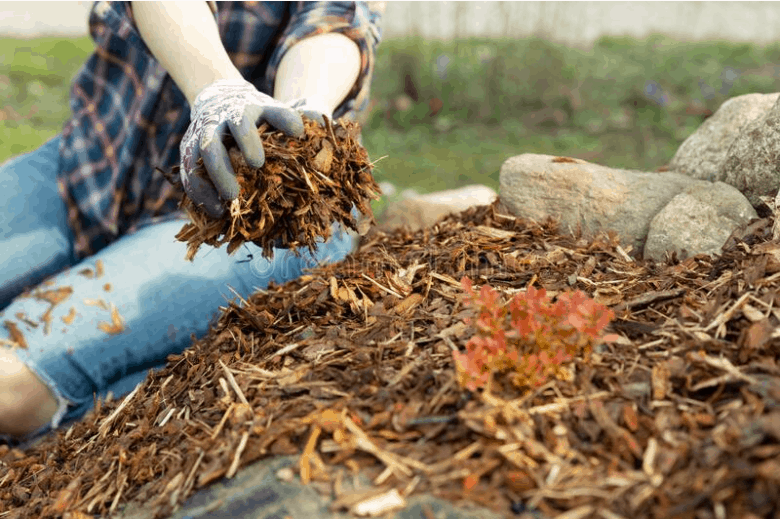
1. Apply Mulch Liberally
Mulch really is a garden hero. In the summer, it suppresses weeds, keeps soil moist, and breaks down to replenish soil nutrients.
In the fall and winter, traps warmth in the ground, keeping it from freezing and extending the growing season.
Depending on your climate, the crops in question, and the thickness of your mulch layer, it can even allow crops to be harvested all through the winter.
Be sure to lay down a thick layer of mulch before the ground freezes. Cold-hardy crops like carrots, parsnips, beets, and kale can last well into the winter with just the little extra warmth the mulch provides.
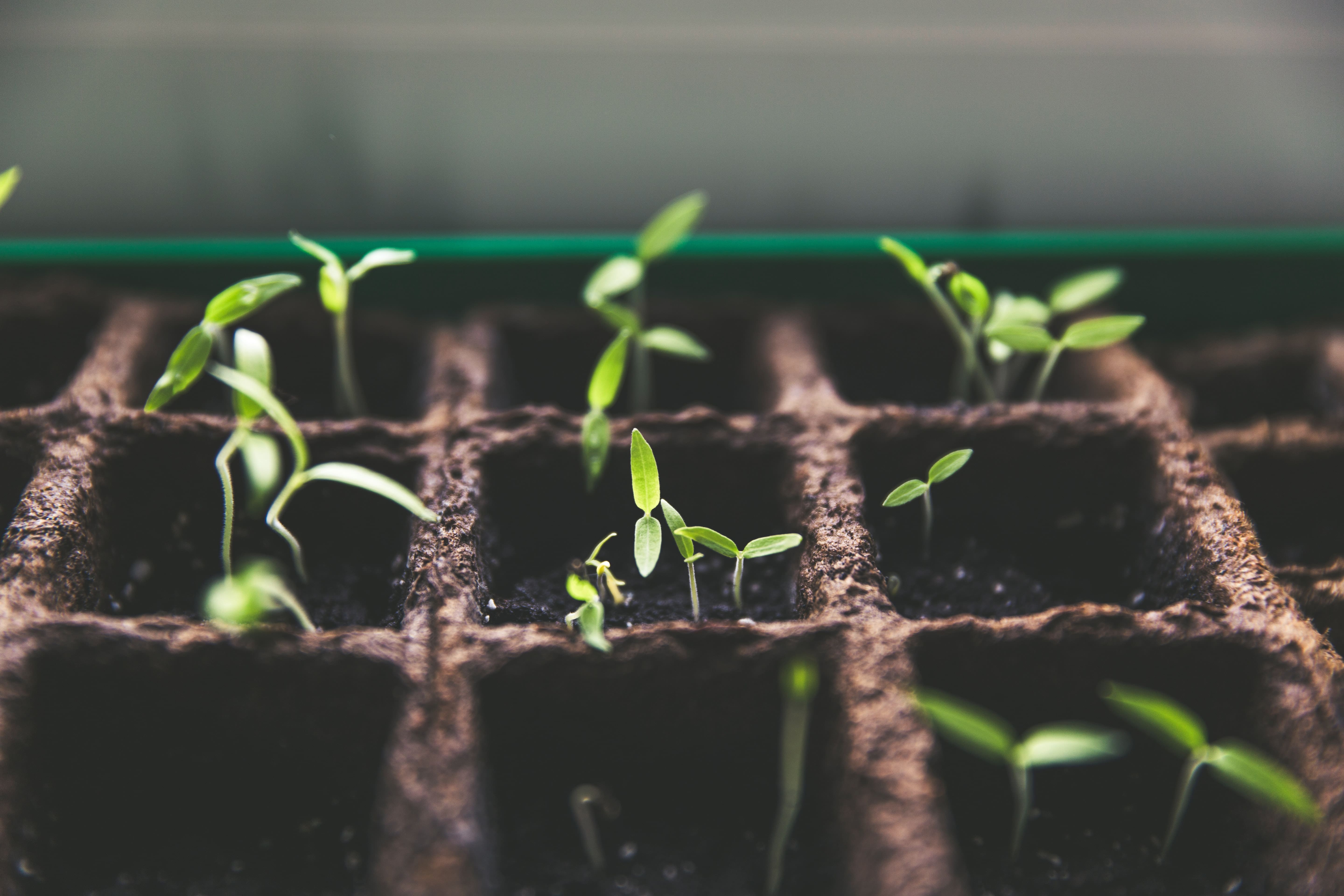
2. Succession Plant
Succession planting is simply the staggering of crops. This can mean replacing one crop with another when you pull it out, or replanting the same plant multiple times for a continuous yield.
If you planted lettuce in the spring but it bolted and got bitter in the summer, plant a second succession now. It will thrive in the coming cool father weather, extending the growing season.
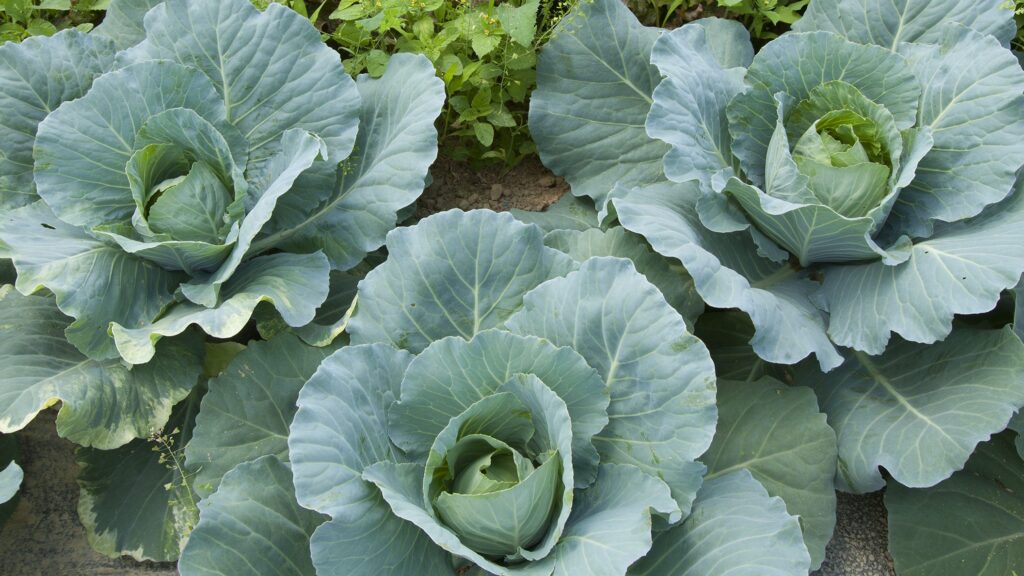
3. Plant Cold-Hardy Vegetables
We’ve already covered how to plan a fall garden on this site, but don’t overlook the potential of cold-hardy veg!
Root veggies like carrots and beets, brassicas like kale and broccoli, greens like lettuce and spinach – these crops are at their best in the cool weather. Fall carrots are sweeter, kale never bitter. Planting vegetables that can live through the frost is one of the best and easiest ways to extend the growing season.
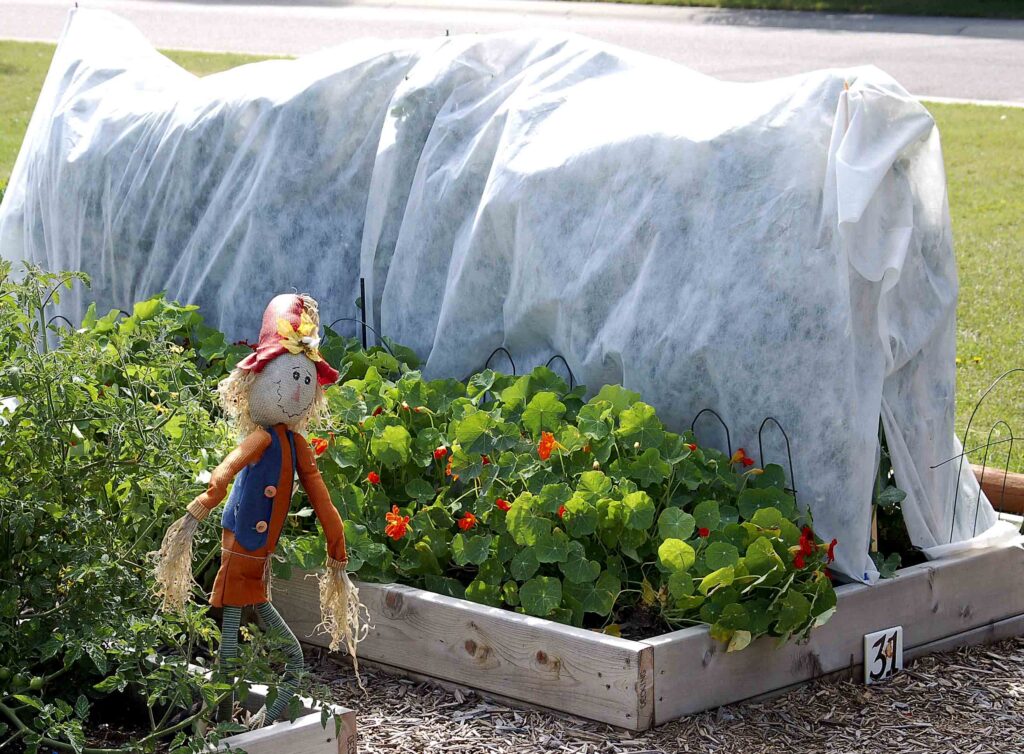
4. Use Row Cover to Protect a Whole Bed
Employing hoops and row cover is a simple, affordable solution for extending the season. Like mulch, row cover helps keep the soil warm. It creates a little microclimate giving your plants extra protection.
Row cover comes in either fabric or plastic, in a few different weights that offer differing levels of protection. Standard row cover gives about 4°F – meaning it protects frost-tender plants down to 28°F instead of 32°F. You can also get heavier garden quilt that will provide protection down to 24°F.
Just be sure to check how much light the row cover blocks. Generally, the heavier the protection, the more light it blocks too. You’ll also have to be more diligent about watering as plants won’t receive rainwater.
Row cover is surprisingly effective at warming the soil–be sure to lift it on sunny/warm days so you don’t accidentally cook your plants!
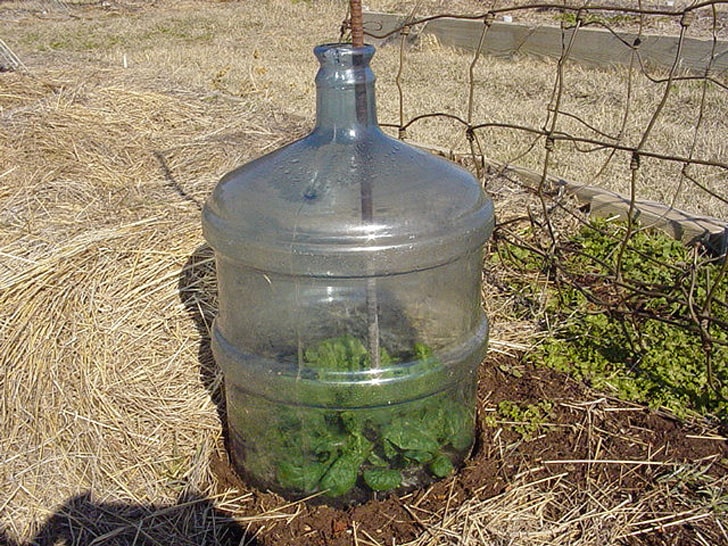
5. Use Cloches to Cover Individual Plants
If you’re not interested in protecting a whole bed or extended area, you can also use a cloche to just protect individual plants.
Cloches are portable covers that sit on top of single plants. They create a mini greenhouse environment, trapping heat near the plant to extend the growing season.
You can buy fancy versions of these at garden centers, or you can make your own at home! This simple tutorial shows you how to make a cloche out of a plastic milk jug!
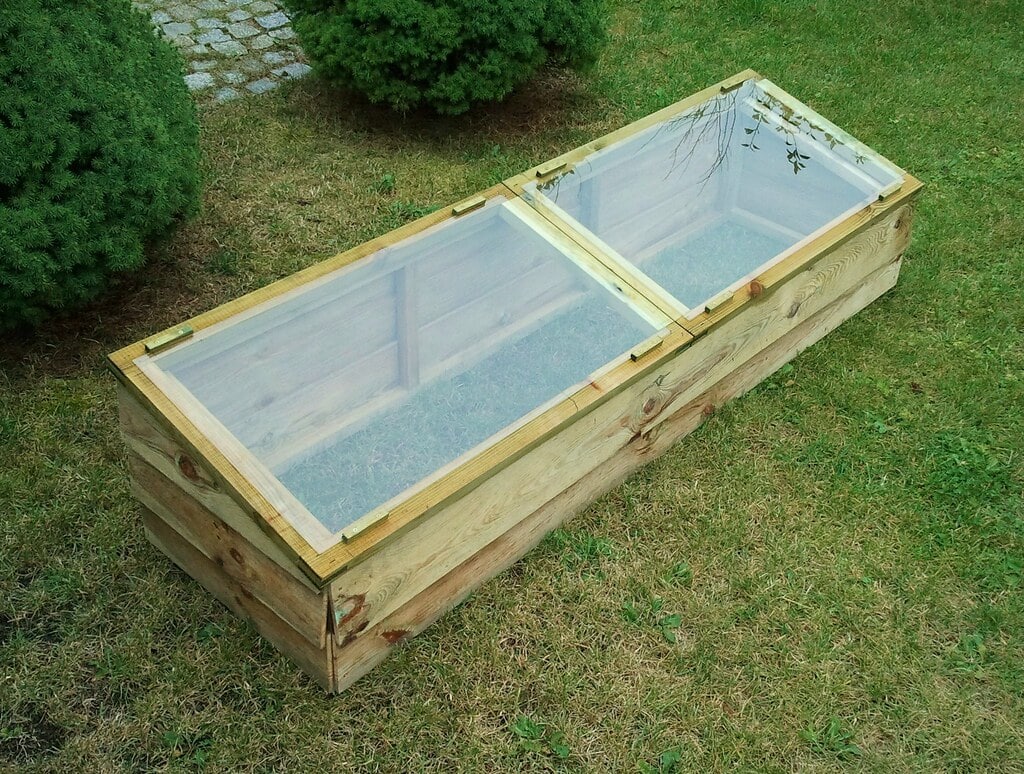
6. Build a Cold Frame
Alternately, if you’re looking for something a little more permanent, build/purchase a cold frame to place over and protect plants.
It works essentially the same way as a cloche, though cold frames are often larger. A cold frame is essentially a mini greenhouse. It has a glass top that lets in and traps sunlight, heating the area inside it.
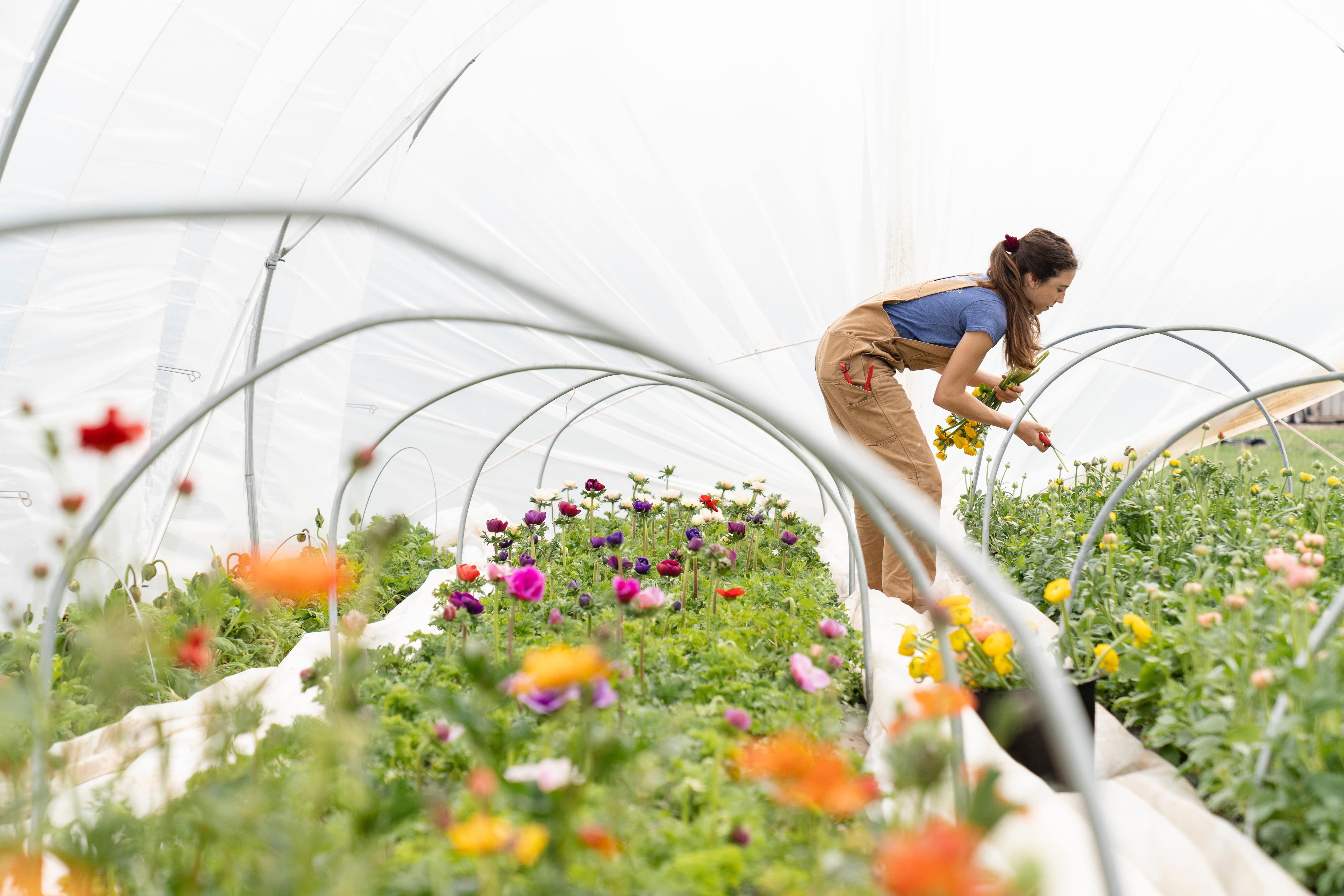
7. Build a Hoop House/Greenhouse
If you’re looking to make a big investment in your garden and growing potential, go for a hoop house or greenhouse. These permanent structures, made of plastic or glass, efficiently trap heat for off-season growing.
This can be as big or small of an investment as you’re comfortable with. But if you’re serious about extending the growing season and maximizing the amount of food you can grow, a hoop house or greenhouse is the way to go!
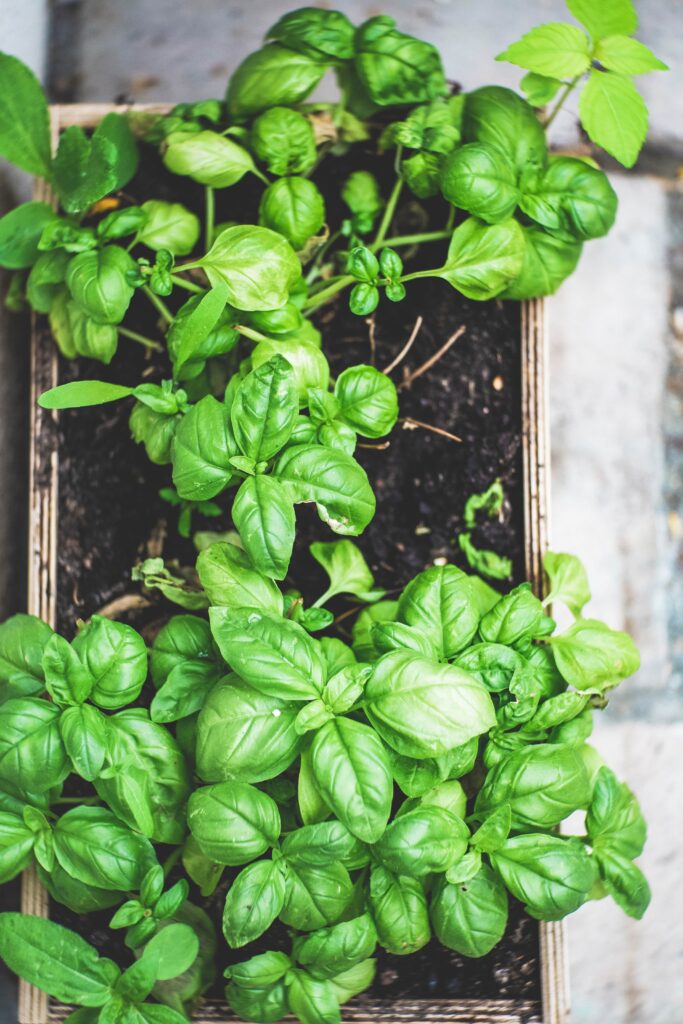
8. Grow inside!
Worse comes to worst and the cold weather can’t be beat, grow inside!
That’s right, just like you grow houseplants inside, there are some garden crops you can try to keep growing in your house.
The easiest/most popular of these is a windowsill herb garden. But people will also bring container plant peppers and tomatoes inside. They won’t thrive as much as in the summer garden, but if you have a warm, sunny window they may hang on longer.
You can also repurpose seed starting lights to give indoor plants more full-spectrum light!




I love gardening and found all your tips and suggestions super helpful. Thanks for sharing.
My ideal self gardens! Hopefully one day I’ll be able to use these awesome tips.